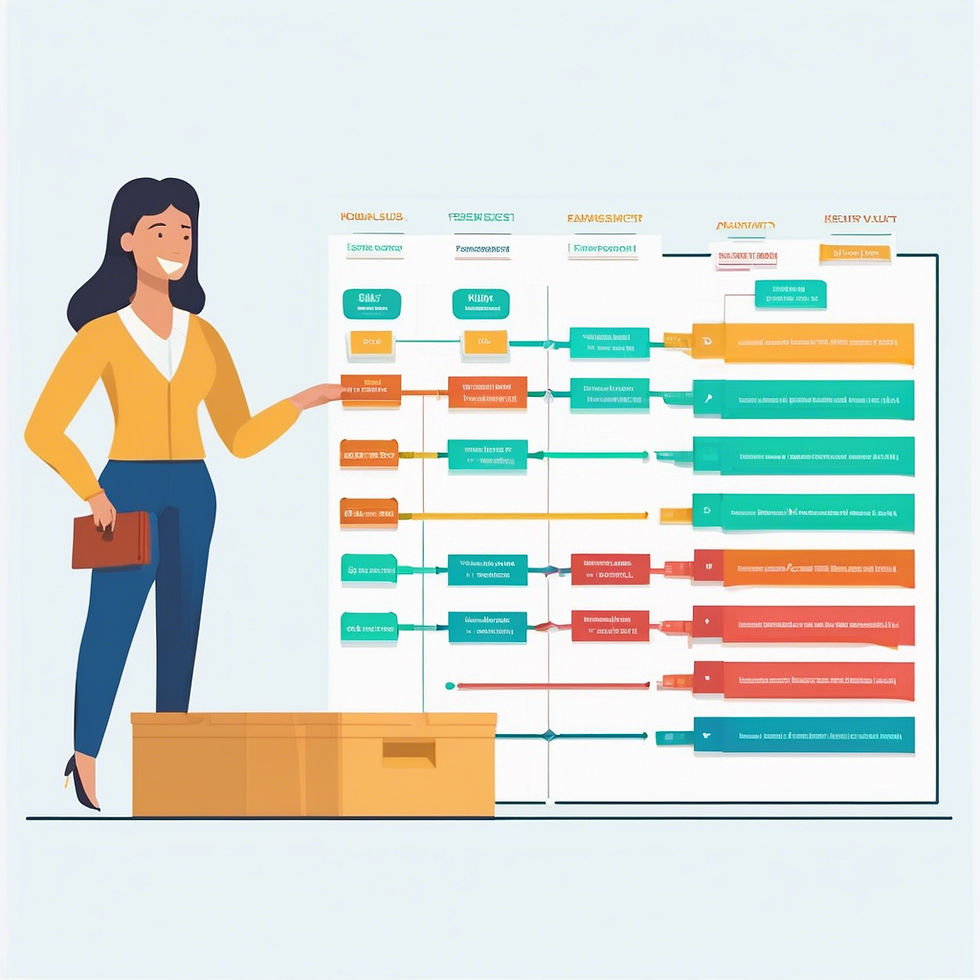The Essential Role of Sequencing Diagrams in Enhancing Project Management Efficiency
- Rajeev Raghu Raman Arunachalam
- Aug 2
- 2 min read
In project management, clear communication and efficient workflows are crucial for success. Visual tools, particularly sequencing diagrams, play a vital role in achieving these goals. Sequencing diagrams not only offer a graphical representation of tasks but also act as strategic frameworks that help teams grasp the timeline and relationships between various project components.
What are Sequencing Diagrams?
Sequencing diagrams are visual tools that outline the order of tasks or events in a project. They provide a systematic way to show how different tasks are interconnected over time. For instance, a sequencing diagram might illustrate that completing a design phase must occur before starting development. By allowing project managers and teams to see the entire workflow at a glance, these diagrams help identify critical paths, potential bottlenecks, and areas of risk. A study showed that projects using sequencing diagrams experienced a 30% reduction in timeline delays compared to those that didn’t.
The Importance of Sequencing Diagrams in Project Management
Effective coordination of tasks is at the heart of project management. Sequencing diagrams help teams prioritize their activities based on dependencies. For example, if Task A must be completed before Task B can start, the diagram makes this clear. Such clarity reduces confusion and ensures that teams focus on essential activities. In fact, teams utilizing sequencing diagrams reported a 25% increase in productivity.
Sequencing diagrams also boost communication among team members and stakeholders. These diagrams serve as a universal language, easily understood whether someone has extensive project management knowledge or not. This visual reference fosters collaboration, ensuring that everyone stays in sync regarding project status and timelines.
Furthermore, sequencing diagrams streamline project documentation. They can be foundational for more detailed plans, such as Gantt charts or timelines. A well-crafted sequencing diagram can save hours in planning, allowing teams to focus on executing rather than defining tasks.
Best Practices for Creating Effective Sequencing Diagrams
To fully benefit from sequencing diagrams, adhering to best practices is essential. Here are some key recommendations:
Prioritize Clarity: Ensure diagrams are straightforward and easy to interpret. Use clear labels and concise descriptions with a logical layout that effectively conveys the order of events.
Involve Team Feedback: Engage team members in the diagram creation process. Their input is valuable and provides diverse perspectives that enhance the accuracy of the workflow representations.
Regular Updates: Continuously review and update diagrams as the project progresses. Keeping the diagrams current allows for efficient adjustments when tasks change or new challenges arise. This adaptability is vital for managing shifting scopes or priorities throughout the project lifecycle.
Final Thoughts
The role of sequencing diagrams in project management is significant. They improve planning, facilitate better communication, and support effective risk management, ultimately boosting project efficiency. By adopting best practices in their creation and ongoing maintenance, project teams can leverage these diagrams to streamline their processes and drive successful outcomes. Emphasizing their use can be a game changer in navigating the complexities of modern project management.







Comments